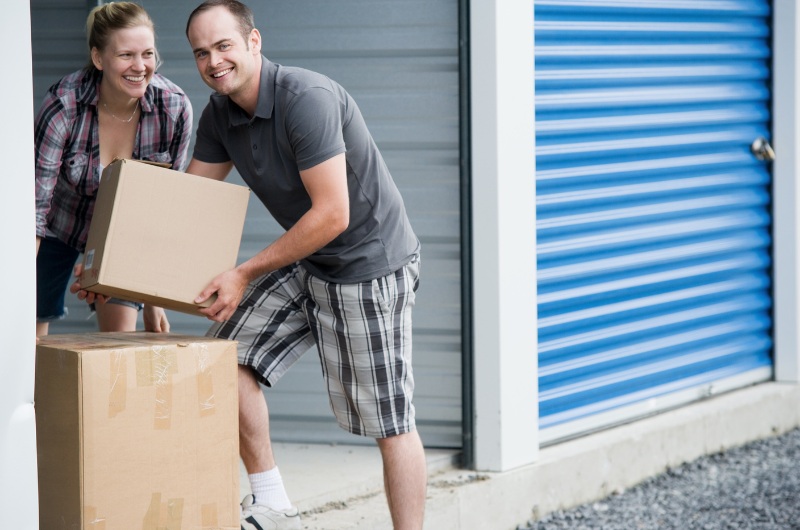The selection of an appropriate storage unit size holds great importance in ensuring the protection of our possessions, whether it is for relocation, decluttering, or expanding living space.
Storage units offer a versatile solution and are available in various sizes to accommodate various requirements. This variety, however, often leads to confusion.
How does one determine the appropriate size? Choosing an undersized unit can lead to frustration. Furthermore, a large storage unit means paying more.
This article aims to guide you in effectively estimating and evaluating storage requirements. This article provides valuable insights into the services offered by self storage companies and the process of assessing one’s storage needs. It explores how these companies assist individuals and out-of-state movers find the most suitable storage solution.
By considering variables such as volume, arrangement, and the dimensions of your belongings, you will be adequately prepared to locate a storage space that’s just the right fit.
How To Determine Storage Unit Size
1. Assessing Storage Needs
It is important to think carefully about what you want to store before looking for a storage unit. The first step is to make a list of your things and figure out how much they all weigh.
You can also get a more accurate moving quote if you work with out of state movers.
2. Calculating Storage Unit Dimensions
After compiling a list, the next step is to estimate the amount of space necessary. Many storage unit companies offer online calculators or applications that can generate a simulated estimation of the volume that your belongings may require. This will assist in the estimation of storage unit volume.
3. Matching Belongings to Storage Unit Size
Not all possessions are created equal. Some should be stacked, while others require sufficient standing room.
When selecting a storage unit capacity, it is critical to consider the square footage and cubic footage of the units. This thought will assist you in avoiding selecting a unit that appears adequate in terms of floor space but falls short in volume.
Storage Unit Size Guide
Most companies offer storage units of different sizes. Here’s a quick reference guide to common sizes of storage units:
- 5’x5’ Unit: Comparable to a small closet, perfect for boxes, small furniture, or seasonal items.
- 5’x10’ Unit: Similar in size to a walk-in closet, good for the contents of a small studio.
- 10’x10’ Unit: The size of a standard bedroom, capable of fitting an entire living room or two full bedrooms.
- 10’x15’ Unit: A little smaller than a one-car garage, suitable for multiple bedrooms or larger living spaces.
- 10’x20’ Unit: The size of a standard garage, ideal for a full house or for use during major transitions like out-of-state moves.
- 10’x30’ Unit: This size can often handle the contents of a larger home or serve as a space for out-of-state movers during a home relocation.
Factors To Consider When Choosing The Right Storage Unit Size
1. Size of Largest Items
When conducting an inventory assessment, it is important to take into account the dimensions of the largest items in your stock. Storing large furniture items, such as sofas or dining tables, necessitates finding a larger storage unit.
2. Intended Storage Duration
It depends on how long you plan to keep the things stored. If you don’t need to access your items frequently, consider renting a smaller space. It is also great for short-term storage.
However, for long-term storage, you might want a larger unit to allow for better organization and ventilation. This reduces the risk of damage over time.
3. Access Frequency
How often you need to access your stored items also matters. If you want to visit the unit regularly to retrieve or add items, you’ll want extra space to move around. This extra room will ensure you can move freely without bumping into furniture.
4. Organization Needs
Good organization will save you time and protect your items from damage. If you need shelves for boxes or want to keep a pathway clear for easy access, a larger unit might be necessary. The extra room will ensure you store everything neatly without everything tumbling out.
5. Future Acquisitions
Plan for any items you might acquire soon. If there’s a possibility that you’ll need to store more, it’s wise to choose a storage unit with additional space to accommodate new additions.
6. Budget
Your budget will significantly determine what size storage unit you opt for. Larger units cost more. You need to balance your desires with what you can afford.
Additional Tips When Finding Appropriate Storage Unit Dimensions
1. Declutter First
Go through your items critically and decide what you truly need to keep. Sell, donate, or dispose of anything that you no longer use. This reduces the storage space you need and puts some extra cash in your pocket if you sell items of value.
2. Pack Strategically
Use boxes that are the same size to make stacking easier, and fill them completely to prevent collapsing when they’re stacked. Label all your boxes clearly on multiple sides so you can identify contents at a glance without having to move everything around, which saves time and effort.
3. Choose the Right Location
Storage unit prices vary based on location. If you don’t need frequent access to your items, consider choosing a facility that’s a bit farther away from prime locations, as they often have lower rates. However, calculate the cost of transportation to make sure the savings are worth it.
4. Compare Prices and Special Offers
Compare prices from different storage unit providers. Remember to ask about promotions, first-time renter discounts, or reduced rates for long-term commitments. Some facilities also offer a discount if you pay several months in advance.
5. Reassess Regularly
Periodically reassess your storage needs. If you’re not using many stored items, it might be time to declutter again and downgrade to a smaller unit. This ongoing process will save you money over time.
Frequently Asked Questions On Choosing The Right Storage Unit Size
How do I maximize the space in my storage unit?
To maximize space, disassemble any furniture that can be broken down. In addition, use shelving to take advantage of vertical space for boxes.
Store heavier items on the bottom and lighter ones on top. Leave a pathway in the middle for easy access to your items.
Lastly, consider storing couches vertically and use drawers and the insides of appliances for additional storage.
What’s the best way to protect my belongings in a storage unit?
Choose a climate-controlled unit to protect against extreme temperatures and humidity if you want to store sensitive items. Use sturdy, high-quality boxes and packing materials. Wrap furniture and electronics with protective coverings.
Place pallets on the floor to keep items off the ground, reducing the risk of water damage. Consider insurance for your belongings for added protection.
Should I rent an indoor or outdoor storage unit?
The choice between an indoor or outdoor unit depends on your needs. Indoor units offer better protection from the elements. They are also climate-controlled, which is important for sensitive items.
However, they are less accessible than outdoor units, which you can often drive up to for easy loading and unloading. Outdoor units are more convenient for storing large items like vehicles or when frequent access is needed.
Can I fit a vehicle or large equipment in a storage unit?
Yes, you can store vehicles or large equipment in appropriately sized units. Most vehicles will require a minimum of a 10×15 unit. We recommend 10×20 or even a 10×30 unit for larger vehicles or equipment. Check with the storage facility for any requirements to ensure you get the best deal.
What if I underestimate the size of the storage unit I need?
If you underestimate, you can either rent an additional unit or move to a larger unit, depending on availability. Most facilities are flexible, but transferring to a larger unit is more cost-effective than renting multiple small ones. It’s best to contact the storage facility to discuss your options.
Wrapping Up
Selecting the right storage unit size doesn’t have to be complicated. By understanding the offerings from various storage and moving companies, calculating your needs carefully, and organizing them efficiently, you can ensure that your belongings are stored safely and accessible without overpaying for unnecessary space.
You can make the most of your storage unit if you pack and stack your belongings efficiently. If you have many belongings, going for a slightly bigger unit will prevent you from having to make an unpleasant upgrade in the future.
We hope this guide helped you choose the storage unit size for your needs.
Happy moving!




